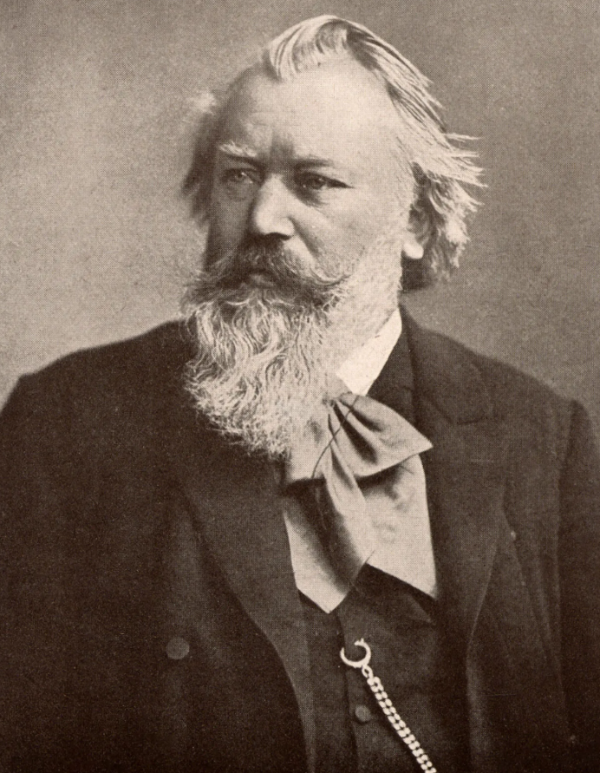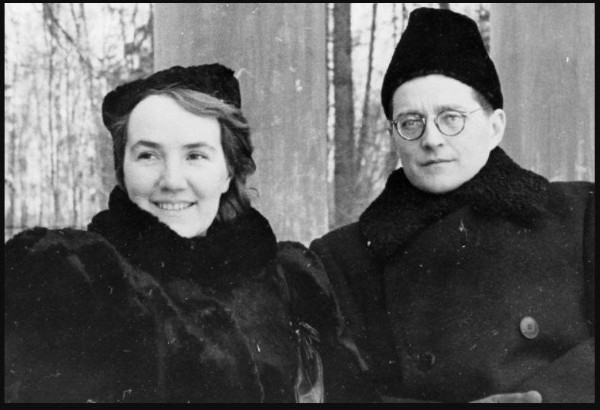Fazıl Say is one of the most important contemporary artists. As a pianist, he has performed in major concert halls around the world, showcasing a repertoire of classical masterpieces. However, he is also known for his performances of contemporary works and his own compositions.

Fazıl Say
Say’s output as a composer is distinctive for its daring and innovative approach to combining cultural and musical traditions. By blending the complexity of Western classical music with the richness of Turkish folk and jazz, he has carved out a unique musical space.
His works speak not only to his Turkish heritage but also to universal themes of humanity, identity, and freedom, making his music both deeply personal and globally resonant. Through his compositions, Say continues to push the boundaries of musical language, creating works that are as intellectually stimulating as they are emotionally powerful.
Fazıl Say: Kumru Ballad
Musical Visionary
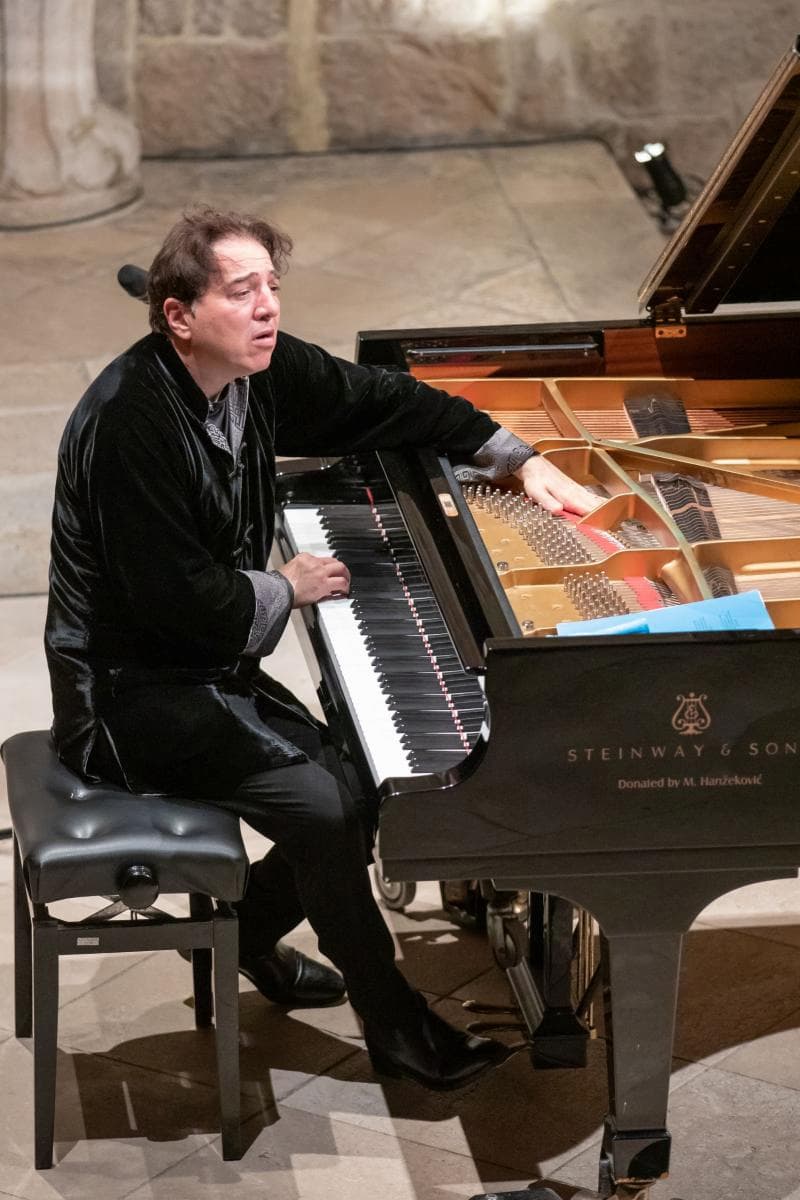
Fazıl Say
Fazıl Say’s compositions encompass a wide variety of genres, from piano solos to orchestral pieces, chamber music, and choral works. His musical style is certainly eclectic, blending Western classical forms with the rich rhythms and melodies of Turkish folk music. This combination of traditions has given rise to compositions that feel both familiar and innovative.
Say’s music often explores themes of Turkish identity, cultural heritage, and personal introspection, frequently drawing from the country’s complex political and historical landscape. His works convey a strong sense of emotional depth and have been praised for the way he uses music to explore social and political issues, including freedom of expression and individual rights.
Political Commentary

Marianne Crebassa
Fazıl Say: Gezi Park 3, Op. 54 (Marianne Crebassa, mezzo-soprano; Fazıl Say, piano)
Fazıl Say is deeply connected to the changing landscape of his homeland. He created a trilogy to honour the Gezi Park protests of 2013, a movement sparked by opposition to the planned destruction of an Istanbul park. The protests were met with heavy repression, leading to further unrest across Turkey.
The third and final piece, Gezi Park 3, was originally composed for mezzo-soprano, piano, and chamber orchestra before being adapted for just mezzo-soprano and piano as a tribute to singer Marianne Crebassa. The work blends intense, dramatic moments with subtle hope for reconciliation. The singer’s vocal line, filled with ornamentation and melismas, echoes the haunting laments found in mourning rituals of some Eastern cultures.
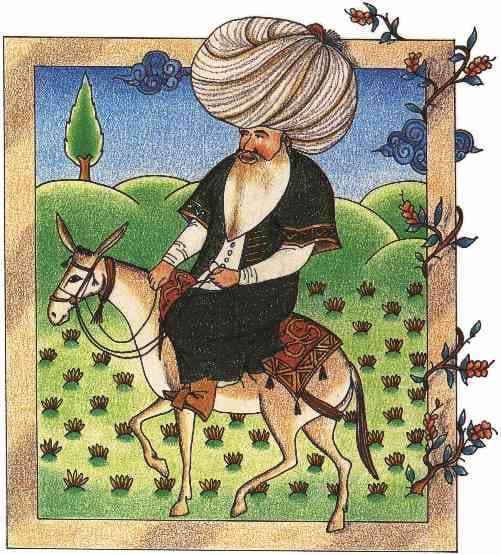
A 17th century miniature of Nasreddin
Fazıl Say: 4 Dances of Nasreddin Hodja (Fazıl Say, piano)
Folklore
Say draws on a rich tapestry of Turkish folklore, creating compositions that directly reference folk legends and narratives. Such is the case with his Opus 1, a set of piano pieces written in 1990. As he explains, “To me, this work allowed me to articulate myself as a composer with enough confidence to assign opus numbers to my works.” The work under discussion is the 4 Dances of Nasreddin Hodja.
Nasreddin Hodja, known under a variety of names, is a character commonly found in the folklore of the Muslim world. He appears in thousands of stories, sometimes wise, but in many, he is presented as a holy fool. Say calls him the “Turkish Don Quixote.” Nasreddin stories usually include subtle humour and are frequently of a pedagogic nature. Say’s short piano pieces are constructed wholly on irregular rhythm beats and “require a certain virtuosity as they inject a note of raucous abandon.”
Fazıl Say: Istanbul Symphony
Istanbul Echoes
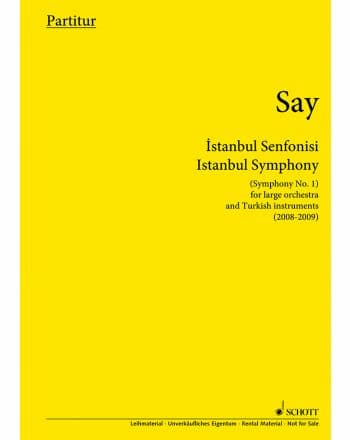
Fazıl Say’s Istanbul Symphony
Say frequently talks about how Istanbul, a city straddling two continents and home to a variety of cultures and traditions, has shaped his approach to music. In 2010, he completed his “Istanbul Symphony” as a tribute to the city and created an evocative musical journey that reflects the city’s rich cultural, historical, and geographical layers.
It is not a symphony in the traditional sense but a musical portrait that captures different facets of the city. It is a deeply personal work, reflecting a sense of nostalgia and Say’s own experiences in the city. The symphony unfolds in three movements, each designed to evoke distinct elements.
“The Bosphorus” reflects the famous strait dividing Istanbul into its European and Asian sides. Fluid music symbolises water, and the rhythmic sections represent the bustling life around it. There are references to traditional Turkish rhythms and melodic fragments, but they are woven into a larger symphonic fabric.
The second movement, “The Historic Peninsula”, evokes Istanbul’s rich history, especially around landmarks like the Hagia Sophia and Topkapi Palace, with slower, meditative music reflecting the city’s Ottoman and Byzantine heritage. In the final movement, “The City’s Pulse,” Say captures the vibrant energy of modern Istanbul, using rhythmic intensity and intricate melodies to mirror the city’s busy streets and its diverse, cosmopolitan life.
Fazıl Say: Cello Sonata, Op. 25 “4 Cities” (Nicolas Altstaedt, cello; Fazıl Say, piano)
Passions of the Orient
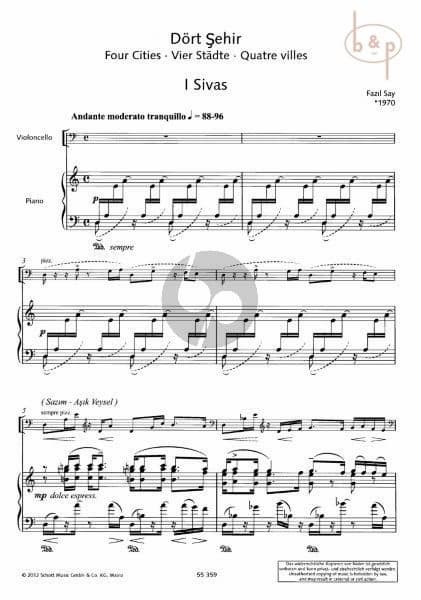
Fazıl Say’s Cello Sonata – Four Cities
The Cello Sonata Op. 25 plunges us into the world of poetry, mysticism, and the secrets and passions of the Orient. Subtitled “Four Cities,” it is a musical celebration of four Turkish locations that the composer describes as “full of personal memories.” It was commissioned by the BBC and premiered in June 2012.
During his student days, Say performed in the city of Sivas, a major cultural centre located in Eastern Anatolia. He was fascinated by the song “Sazim,” named after a seven-stringed member of the lute family. In “Four Cities,” he captures the instrument’s melancholic personality. The city of Hopa lies on the border with Georgia at the east end of the Black Sea region. This movement describes a vibrant wedding celebration, with the music crafted in the style of a “Horon,” a fast-paced folk dance in 7/16 time. The sound of the kemençe, a three-stringed instrument played on the knee, is central to the music.
Since Say was born and raised in Ankara, the third movement, thus named, explores an intensely nostalgic mood. It is a mournful recollection of a protest song dating back to the First World War. Finally, Bodrum is a popular holiday destination often referred to as the “Turkish Saint-Tropez.” The focus falls on the Bar Street, where countless musical styles intermingle, everything from rock and jazz to pop and swing. As Say explains, “In the final section, a fight breaks out, and the music is brought to a hurtling conclusion by a pub brawl.”
Fazıl Say: Black Earth
Turkish Identity
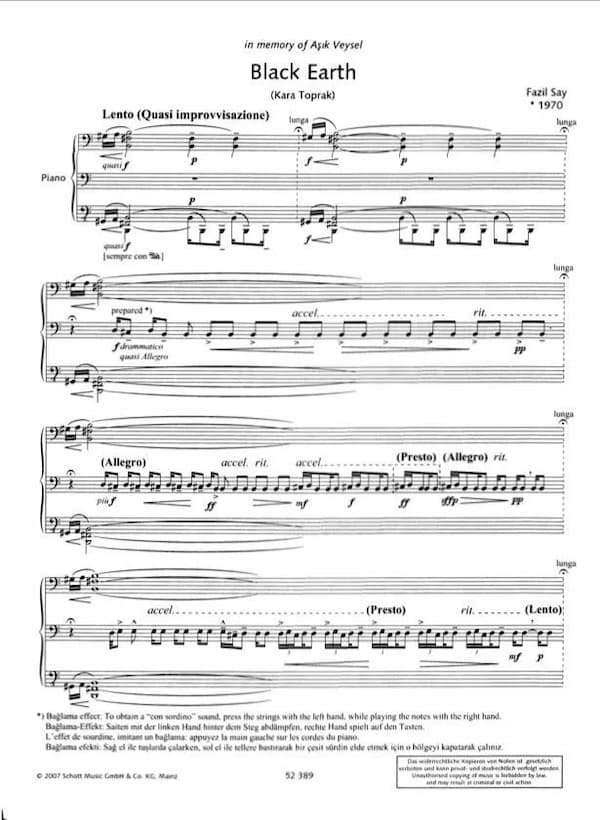
Fazıl Say’s Black Earth
“Black Earth” is one of Say’s most significant works, showcasing his technical virtuosity, creative genius, and emotional depth. But it is not just a piece of music but a journey into the soul of Turkey, its people, and a moment in history. It expresses the complexity of Turkish identity, its tension between East and West, modernity and tradition, hope and despair.
Say suggested that this work is often “driven by a desire to capture the essence of his homeland and to express the emotional and spiritual dimensions of life in Turkey.” The composition is deeply atmospheric, combining traditional and contemporary techniques. Blending modal scales, rich harmonies, rhythmic complexity, and dynamic contrasts, the
rhythmic patterns and techniques commonly found in Turkish folk music create a sense of unpredictability and tension. “Black Earth” has earned a place in the contemporary classical music repertoire as it serves as a bridge between cultures, traditions, and historical narratives.
Improvisation
In an interview, Fazıl Say explained that “composed music should emerge as if it were an improvisation, and composing is already a form of improvisation.” To be sure, the improvisational traditions of the Turkish heritage and his love of jazz are an integral part of both his performance style and his compositional approach. In that way, Say considers himself a storyteller in music. “There is always a story I have imagined that resonates in the background.”
Fazıl Say’s approach to music transcends traditional genres by effortlessly blending classical, Turkish, and jazz elements, particularly through his improvisational skills. His ability to merge different musical worlds not only highlights his technical prowess but also emphasises his deep emotional connection to the music, offering audiences a unique and evolving experience.
For more of the best in classical music, sign up for our E-Newsletter


